
Official Edgar Rice Burroughs Tribute and Weekly Webzine Site Since 1996 ~ Over 15,000 Webpages in Archive Volume 7156a 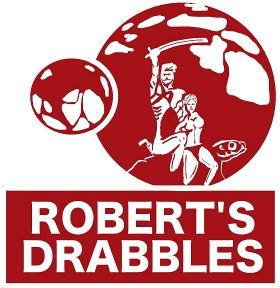 |
ERB 100-Word Drabbles
JUNE II Edition :: Days 16 - 30
See Days 1 - 15 at ERBzine 7156
by Robert Allen Lupton
With Collations, Web Page Layout and ERBzine Illustrations and References by Bill Hillman
ERB EVENTS for JUNE 3rd WEEK
ERB EVENTS for JUNE 4th WEEK
TYPECAST FROM CHILDHOOD
June 16: On this day “Tarzan Finds A Son!” was released and Johnny Sheffield began a career as a jungle boy that lasted until his last appearance as Bomba in 1955’s “Lord of the Jungle. John Matthew Sheffield Cassan appeared in other films including playing the childhood version of Knute Rockne in “Knute Rockne, All-American.”
This film was originally to be called Tarzan in Exile. As it featured the jungle couple acquiring an infant, it was changed to Tarzan Finds a Son. The plot device was to appease morality groups, as Tarzan and Jane were married in the films. This was intended as Maureen O'Sullivan's last appearance as Jane in the series, with her character to die as a result of a spear wound. O'Sullivan was tired of the Jane role, and Boy was brought in as a substitute interest. After audience previews showed very negative reactions to her death, the ending was changed.
Johnny Sheffield, who played Boy, claims that Weissmuller handpicked him for the part and taught him to swim.
“Typecast from Childhood” is today’s 100 word drabble.
Actor, Reginald Sheffield, Johnny’s father replied, “Yes Mr. Lessor, I’m afraid the boy will be typecast.”
“I understand. I’m familiar with your work. You transitioned from silents to talkies, but a lot of your recent work has been uncredited.”
“Mr. Lessor, what are you saying?”
“I’m just saying there’ve been a lot of Tarzan films
and I’m going to make several more. Johnny Weissmuller is doing fine playing
Tarzan. Only people who aren’t working worry about being typecast. Your
son will be fine.”
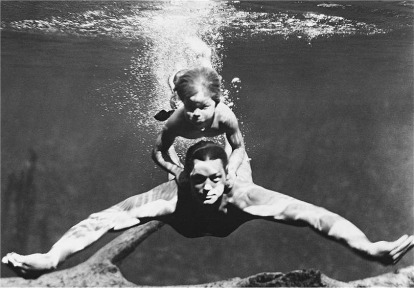
STATE OF CONFUSION
June 17: On this day in 1914, A. C. McClurg published the first edition of “Tarzan of the Apes.” The print run was 5000 copies for the first state of the first edition. For information about how to tell the difference between a first state, a second state, and a third state copy, the curious or concerned should refer to Robert Zeuschner’s “Edgar Rice Burroughs: The Exhaustive Scholar's and Collector's Descriptive Bibliography” or the website, http://www.erbfirsts.com/tarzan-html/t1.asp….
The short version is: The difference between the 1st and 2nd state is that there is an Acorn symbol printed on the spine above A.C. McClurg. The third state has a title page that has been tipped in All three printings have gold leaf lettering on the cover and spine. The printer’s name, ”W. F. Hall and Co..” is printed in Gothic typeface rather than in Old English typeface on the copyright page of the third state.
There were a total of 10,000 copies of all three states, few of which survived the past 106 years, and far fewer survived with an intact dust jacket.
“State of Confusion” is today’s Edgar Rice Burroughs inspired drabble.
STATE OF CONFUSION
![]()
“What about Delaware?”
“Not the first state, a first state. There’re three first edition states. The second state has an acorn on the spine.”
“A damn acorn.”
“Your copy has W. F. Hall in Gothic typeface instead of Old English. Your title page is tipped in. Your copy is a third state.”
‘Nuts, Old English Polish, and tip the title page 15%. I don’t believe you.”
“The scholars agree with me.”
“If you owned my copy, you’d disagree with them.”
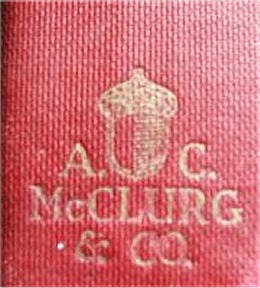
APES AND DRAGONS
June 18: On this day in 1999, Disney released the animated film, “Tarzan,” complete with musical numbers, perhaps somewhat reminiscent of dozens of Bollywood Tarzan films from days gone by. Wikipedia and other sites give the release date as June 16, 1999, but ERBzine, among others, lists the date as June 18th. I’m going with the 18th.
https://www.erbzine.com/mag0/0013a.html
The producer was Bonnie Arnold, to my knowledge the first female to produce a Tarzan film. It was directed by Kevin Lima and Chris Buck. Bonnie Arnold is currently the President of Feature Animation for Dreamworks Animation. She works on the “How to Train Your Dragon” franchise for which she received a Golden Globe award and two Academy Award nominations.
"Apes and Dragons" is today’s drabble.
APES AND DRAGONS
![]()
“Apes and Dragons. The apes are the same color and they’re drawn to look like apes. Dragons can be any color and have any configuration of arms, legs, and wings. My rule for new dragons is that they’re interesting and fun.”
“Which are easiest?”
“You do realize the apes and dragons, like the people,
are illustrations. They aren’t real. Professional actors provide the voices.”
“It’s OK, I know you have to say that, but you can
tell me the truth.”
“Fine, dragons, because I don’t speak dragon.”
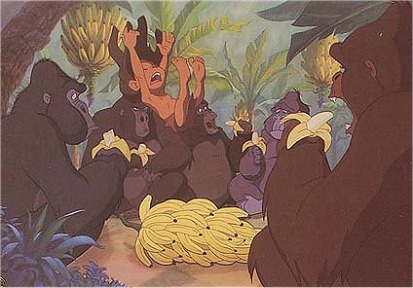
TARZAN GOOD
June 19: On this day the Boston Sunday Post published the Edgar Rice Burroughs article, “What Makes Tarzan Act That Way?” ERB reworked the article from the article published previously by Writer’s Digest in June 1932 as “The Tarzan Theme.”
The article has been retyped by Bill Hillman and is available in its entirety at:
https://www.erbzine.com/mag17/1788.html#act
The Post cover included here is not for June 19. 1938.
ERB discusses why he writes, “to keep the wolf from the door,” and Tarzan as a force for good rather than evil.
Today’s drabble is a 100 word selection from the article entitled, “Tarzan Good.”
TARZAN GOOD
![]()
He may not be a force for good; and if he entertains, that is all I care about; but I am sure that he is not a force for evil, which is something these days.”
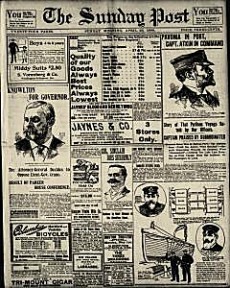
STRONG AND SILENT
June 20: On this day in 1954, Tarzan the Silent, Miles O’Keeffe was born in Ripley, Tennessee. Happy Birthday, Miles.
Miles was a high school football star and attended the Air Force Academy where he played halfback on the freshman team. He transferred to Mississippi State and became a lineman. He worked a prison counselor, a playground manager and played semipro rugby before becoming involved in making movies.
After appearing as Tarzan, opposite Bo Derek as Jane, in “Tarzan the Ape Man,” starred in three European movies, the Ator, trilogy. He also appeared in “Sword of the Valiant,” “The Bengal Lancers,” “Campus Man, “Waxwork,” and the “The Drifter,” among several others, making over 25 films from 1981 through 2005. After a hiatus, O'Keeffe returned to acting in the short film “King of the Road,” which was shot in the Pittsburgh area in the summer of 2008. Now 63 years old, he appears to be retired from acting.
He is frequently lampooned for his lack of dialogue in “Tarzan, the Ape Man.” The film was a re-make of the much earlier Weissmuller version which also next-to-no Tarzan dialogue.
Today’s drabble, “Strong and Silent,” continues with that theme.
STRONG AND SILENT
![]()
“You picked him because he is pretty.”
“I’m the star here. He has too many lines.”
“Dear, the movie is called “Tarzan, the Ape Man,” not “Jane in the Jungle." I’ve already cut his lines to a bare minimum.”
“Cut them some more. He’s trying to steal the picture.”
“Bo, I doubt that. Your two strongest assets are front and center. He can’t compete with those.”
“That was a boob joke. I hate boob jokes.”
“Just keeping you abreast of the situation, my dear.”

FEAR ITSELF
June 21: On this day in 1937, the William Juhre and Don Garden daily comic “Tarzan the Magnificent” began. The story ran for 96 days. The entire story is available to read at:
http://www.erbzine.com/mag40/4047.html
The tale explores the search for Lord and Lady Montford by the milquetoast, Stanley Wood, his encounter with the evil white hunters, Spike and Troll, the desertion of his safari personnel, capture byAmazonian warrioresses, and other dangers, until Tarzan saves him and helps him learn to be a strong willed individual. Any more information would spoil the story.
William Juhre took over the 'Tarzan' daily from Rex Maxon in 1936, and continued it for two years, after which Maxon resumed his duties on the strip. From 1941 to 1944, he drew the 'Draftie' newspaper strip, which he took over from the original artist, Loren Wiley, during the first year of its run. He also worked as an assistant on the 'Buck Rogers' and 'Flash Gordon' strips, and worked on 'Apple Mary' during the 1940s. He was also a cover artist on the 'Amazing Stories' magazine.
The Edgar Rice Burroughs inspired drabble for today is “Fear Itself.”
FEAR ITSELF
![]()
Tarzan heard of the man so enslaved and eventually freed him. He taught Stanley that fear is its own punishment. Stanley learned to stand up for himself, to fight instead of run, and to confront danger.
He found the missing Montfords enslaved and demanded their release. The chieftain said, “Who would dare make demands of me.”
“Stanley Wood.”
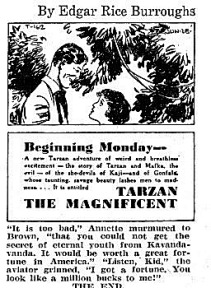
STARING CONTEST
June 22: On this day in 1951, actor, Tommy Carlton (born as Tommy Acker) was born on June 22, 1941. He appeared in Tarzan's Savage Fury (1952). He died on January 1, 2009 in Denver, Colorado, USA. The Carltons had a family acrobatic act. Here’s a link to a video of an early 1948 performance at the Palace Theater in Rockford, Illinois. The act consisted of Tommy Acker (Carlton) and his father. https://www.facebook.com/watch/?v=10150921707604429
The only other film credit I can find for Tommy Carlton is “Looking for Langston,” made in 1990. That’s a shame. Tommy Carlton apparently disappeared completely from show business from 1952 to 1990, as far as I can determine. No other information is available about where he was or what he did from 1952 until his death. It's a real shame that this was his one and only Tarzan film. I thought he was as good a 'Boy' as Johnny Sheffield was in his many Tarzan movies. Tommy was extremely appealing and natural and not a bad little actor.
“Staring Contest” is today’s Edgar Rice Burroughs inspired drabble.
STARING CONTEST
![]()
“But, I’m afraid.”
“Showing respect for the lion’s power is not fear. It is wisdom. The lion is being cautious as well. Let him know that you aren’t prey. Stare into his eyes and don’t blink.”
“Won’t the lion take that as a threat?”
“He’ll take it as confidence unless you growl or feign
an attack. Then he’ll defend himself.”
Joey starred at the lion. He didn’t growl or move.
After a minute, sweat ran down Joey’s face. He whispered, “I have to blink.
What do I do?”
“Run, run quickly.”
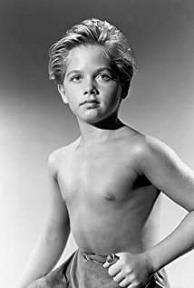
PAVING CREW
June 23: On this day last year, one year ago, Stjepan Šipek, also known by his screen name Steve Hawkes, died. He was a Croatian-born American actor and animal sanctuary owner. He made two foreign and unauthorized Tarzan Films with Kitty Swan, the first was “Tarzan in the Golden Grotto,” renamed “King of the Jungle” and the character’s name changed to Zan. There’s that whole copyright and registered trademark issue.
The 1972 sequel, “Tarzan and the Brown Prince,” included sequences filmed in Rainbow Springs, Florida, where both Sipek and Swan were burned in a fire that got out of control. When the two actors were tied down in a scene, some spilled fuel began a blaze that panicked the film crew. The lion in the film who had been trained to remove Hawkes' bonds freed him. Sipek suffered 90% burns to his body. Sipek vowed he would pay the lion back by looking after big cats.
An animal lover, Sipek later relocated to Loxahatchee, Florida where he started an animal sanctuary that attracted attention when a Bengal tiger escaped and was killed. Sipek was arrested at his Florida home and his animals confiscated on February 27, 2012 for non-regulatory compliance in regards to animal permits.
“Paving Crew” is the Edgar Rice Burroughs inspired drabble for today.
PAVING CREW
![]()
“It’s true, Manuel. I intended to get the permits but
I just never got around to it.”
“You know what they say about good intentions.”
“Don’t be snide, Manuel, just like you were going
to get Edgar Rice Burroughs Inc. permission to use the Tarzan name.”
“I intended to get permission, but I never quite got
around to it.”
“Sounds like we’re both on the paving crew for the
highway to hell.”
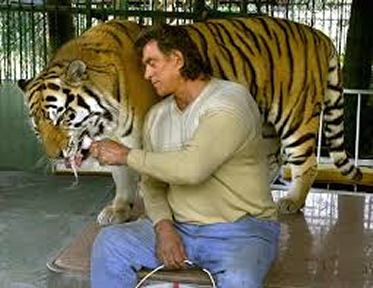
BEAUTIFUL SCREAMER
June 24: On this day in 1884, Lillian Worth born as Lillian Burgher Murphy in Brooklyn, NY. She appeared in two Tarzan films as La, the High Priestess of Opar, “The Adventures of Tarzan,” 1921 and in “Tarzan the Tiger” in 1929. In the first film, she was cast under her own name. In the second, she was identified in some credits as Mademoiselle Kithnou. There was some controversy surrounding her as a few sources claimed that Kithnou (aka Mlle. Kithnou) was actually a Hindu actress, and not Lillian Worth.
By 1913, she was a leading actress for Pathe’s West Coast Studio. Pathé or Pathé Frères is the name of various French businesses that were founded and originally run by the Pathé Brothers of France starting in 1896. In the early 1900s, Pathé became the world's largest film equipment and production company, as well as a major producer of phonograph records.
Lillian stared in silent Western Films. She made the transition to talkies quite well. In addition to regular acting roles, Lillian Worth was in demand in the early 1930s to provide screams in films. Her screaming voice was so strong that sometimes she had to stay at least 50 feet away from the microphones. I guess that makes her the ORIGINAL Scream Queen.
“Beautiful Screamer” is today’s Edgar Rice Burroughs inspired drabble.
BEAUTIFUL SCREAMER
![]()
Lillian Worth smiled, “I won’t be on screen. I’m being considered for my vocal talents.”
“Didn’t you make several silent westerns?”
“Yes, interesting isn’t it. Years in pictures with no voice and now, a voice without pictures.”
“I don’t understand.”
“Well, Fay, turns out my voice is particularly piercing. I get a day’s wages for a few minutes work.”
An assistant director said, ‘Lillian, are you ready?”
Lillian gargled and cleared her throat. “Yes, tell Mr. DeMille that I’m ready for my scream test.”
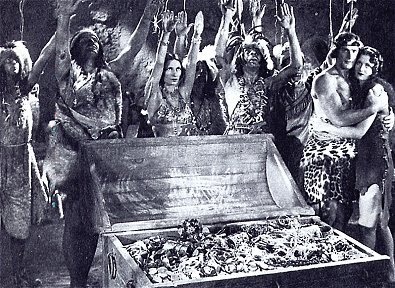
WALK IT OFF
June 25: On this day 65 years ago, Edgar Rice Burroughs was featured in a comic strip similar to “Ripley’s Believe It or Not.” The strip, entitled “Strange As It Seems,” celebrated Burroughs’ active participation in U. S. World War II efforts – despite his age. It says that he learned to fly at age 60 and became a war correspondent at age 67. It included information about the “Business Men’s Training Corps in Honolulu and Burroughs’ ability to out march the younger men. He was commissioned as an officer in the organization.
Today’s Edgar Rice Burroughs inspired drabble is “Walk It Off.”
WALK IT OFF
![]()
“You’ve been an insurance salesman your whole life. I was in the cavalry and worked on ranches.”
“People in the cavalry ride horses. So do cowboys. I still don’t understand why you can walk faster and longer than I can.”
“The cavalry taught me that sometimes your horse can’t carry you. The same thing is true today. Trucks and cars break down. Whenever that happens, you can sit down and starve or you can walk home. We learned to walk.”
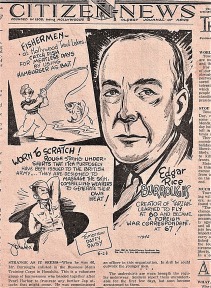
TRIBES AND DINOSAURS
June 26: On this day in 1944, the Rex Maxon written and illustrated Tarzan Daily Comic Strip, “The End of the Sorcerer,” began. The story ran for 24 days and concluded on July 22, 1944. The storyline is a familiar one for the comic strips. Disease has broken out in a native village and Tarzan has to get the medicine to the village and convince the villagers to take it. The witch doctor sees the medicine as a challenge to his authority and tries to keep it from being administered.
The witch doctor replaces the serum with poison and the chief’s son and others become sicker. A doctor and Tarzan intervene, discover the switch, and everyone is saved. The evil witch doctor drinks his own poison and dies.
Rex Maxon drew the Tarzan daily comic from June 10, 1929 until June 20, 1936, over seven years and resumed drawing the comic on January 17, 1938. Don Garden wrote the strip until September 27, 1943. After that Maxon took over writing duties and wrote and drew the daily Tarzan Comic from November 29, 1929 to August 30, 1947 – 1224 episodes. In total he illustrated the Tarzan daily comic from June 10, 1929 until August 30, 1947 with about a year and a half off while William Juhre illustrated the strip from June 22, 1936 until January 15, 1938. Approximately 16 total years and without doing an actual page count – approximately 5000 pages.
The Edgar Rice Burroughs inspired drabble today is “Tribes and Dinosaurs.”
TRIBES AND DINOSAURS
![]()
“Happy to do it. I left the strip before in 1936, but I returned. I’m planning a comic book, “Turok, Son of Stone,” about prehistoric Native Americans.”
“Why would you give up Tarzan?”
“I’ve been drawing Tarzan since the twenties. It’s
time to move on,”
“But Native Americans and dinosaurs together?”
“Once you’ve drawn Tarzan for a while and you’ve never
had him fight a dinosaur, contact me again.”
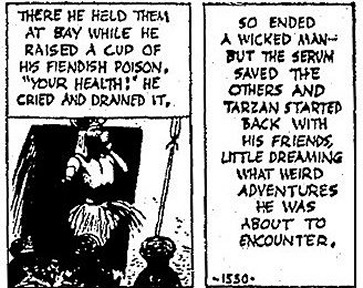
GENIE OF THE APES
June 27: On this day in 1952, the first adult screen Tarzan, Elmo Lincoln, died in Los Angeles, California. Born Otto Elmo Linkenhelt in Rochester, Indiana, Lincoln played the ape man in “Tarzan of the Apes,” “The Romance of Tarzan,’ and the 1921 serial, “The Adventures of Tarzan." He made uncredited appearances in two more Tarzan films. He played a circus roustabout in “Tarzan’s New York Adventure” and a fisherman in “Tarzan’s Magic Fountain.”
He appeared in over 70 films between 1915 and 1952 and has a star on the Hollywood Walk of Fame at 7042 Hollywood Boulevard. He played the genie in the 1917 version of “Aladdin and the Wonderful Lamp.” Two of his films, “Elmo the Mighty,” and “Elmo the Fearless,” both considered lost, featured a hero with Lincoln’s real name – Elmo.
“Genie of the Apes” is today’s Edgar Rice Burroughs inspired drabble.
GENIE OF THE APES
![]()
Elmo replied, “Have you seen my outfit from Fox’s “Aladdin and the Wonderful Lamp.” I clearly have even less shame than I thought.”
“Don’t keep your feelings bottled up.”
“People on the street still treat me like I’m a real genie and can grant wishes. One man wished that all the women in the world would love him.”
“What did you do?”
“I said, “I waved my arms and said, “Poof, you’re
a Hershey bar.”
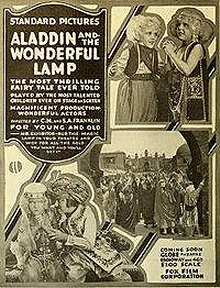
TARZAN, THE TEACHER
June 28: On this day in 2007, Robert M. Thorson, a columnist at the Hartford Courant, who is also a Professor of Geology at the University of Connecticut recommended Tarzan as reading material for middle school and high school student in his article, “Tarzan, A Great Jumping Off Point.”
Thorson had been writing his column for thirteen years at the time. An expert in surficial (surface) geology, Robert M. Thorson has taught at universities for more than twenty-five years and conducted extensive geological research both in Alaska and New England. Thorson has had a special interest in the old New England stone walls first built by European pioneers. This interest has led him to write both a children's book and a comprehensive geological and cultural history of New England's stone walls.
In addition to the five years he spent with the U.S. Geological Survey working primarily in Alaska and Washington State, Thorson has taught at the University of Alaska, University of Wisconsin, and the University of Connecticut.
Today’s drabble is taken from Thorson’s article. Let’s call it, “Tarzan, the Teacher.” The entire article is available at https://www.erbzine.com/news/news21.html.
TARZAN, THE TEACHER
![]()
I read them in elementary school and picked up tidbits of zoology, ecology, anthropology and technology along the way. I read them in college, discovering the author's white male chauvinism, which today could be used to ignite multicultural student discussion. Learning can be fun, textbooks notwithstanding.
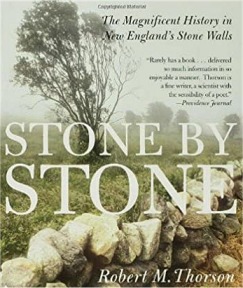
PYRAMID SCHEME
June 29: On this day in 1935, the “The Talk of the Town” column in the “The New Yorker” magazine reported on the Lily-Tulip Corporation had announced its newest product, “The Tarzan Ice Cream Cup." In order to popularize the product, a Mr. Bergman, planned to rig up a Tarzan Ice Cream Truck, full of animals, with a real Tarzan in leopard skin to tour the country and make speeches about Tarzan cups.
It was quite a problem to locate a real Tarzan, Mr. Bergman found one by getting a sturdy giant six feet four, and weighed two hundred-and thirty-five pounds. Everything was set for the tour when Tarzan called Mr. Bergman and told him it was all off.
"Mother won't let me go," he said.
The Tarzan Ice Cream Cups were five-ounce ice cream cups that were licensed to dairies around the company. Foremost Dairies and Beatrice Creamery (Meadow Gold) were two of the licensees. Foremost ran a promotion where kids could send 14 Tarzan Cup lids and 22 Tarzan Magic Picture cutouts of characters from the Tarzan novels, including Jane.
Whitman Publishing Company of Racine, Wisconsin used the backs of 12 of its Big Little Books as Tarzan Cup Grand Prize Pages.
The miniature storybooks themselves were premiums children received after turning in twelve Tarzan ice cream cup lids. For each set of 12 lids returned, kids received one of twelve new Big Little Book stories (sized at approximately 3.5 x 3.5 inches). Titles advertised on the Grand Prize Page included “Tarzan and His Jungle Friends.”
After tearing these back pages from the Big Little Book ice cream lid premiums, kids could receive one of five "grand prizes:" a beautiful pearl-handled four-blade scout knife with Tarzan's picture on both sides; new Sybil Jason embroidery luncheon set (with needles, napkins, tablecloths, thimble, hoop and embroidery silk), a "Book of Marvels,” a Nancy Drew mystery titled “The Message in the Hollow Oak,” or the full-length full sized book, “Tarzan and the Lion Man.”
Today’s drabble inspired by Edgar Rice Burroughs and Ice Cream, ‘Pyramid Scheme,” is the 750th drabble in this series.
PYRAMID SCHEME
![]()
John carefully removed the lid. “I’ll help eat it, but I’m gonna keep the lids. They got Tarzan pictures on them.”
“Pay attention. Twelve lids gets me a free Big Little Book with a tear-out Tarzan premium page. I tear out twelve of those pages and I get a Tarzan knife or even a Tarzan book.”
“Pat, that means you gotta send in 144 lids.”
“We can eat that much ice cream.”
“I dunno. Sounds gross to me.”
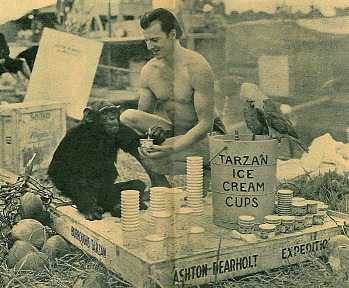
DOWN IN FLAMES
June 30: On this day in 1930, Edgar Rice Burroughs wrote a letter to Collier’s Weekly concerning a telegram Collier’s had send Burroughs. Burroughs used the letter to promote a new book he was about to finish, “That Damned Dude,” aka “The Brass Heart,” aka “The Terrible Tenderfoot,” and finally “The Deputy Sheriff of Comanche County.”
It seems the telegram spent five months lying in the mountains near Cedar Lake, Utah in the wrecked mail plane of Captain Maurice Graham, who was lost in a blizzard on January 10, 1930. The newspapers had a field day attempting to cash in on the mystery surrounding his disappearance. Was Graham shot out of the sky, the victim of the first airplane robbery? Did he abscond to Mexico with $1 million in securities that were rumored to be in the mailbags? Was he wandering the wilderness with amnesia, in danger of freezing to death?
Details about the crash of Captain Graham, who is credited with locating the ‘Lost Battalion’ in the Argonne Forest during WW1 are available at https://www.historynet.com/mystery-missing-pilot.htm
Today’s drabble, "Down in Flames,” was written by Edgar Rice Burroughs and is an excerpt from his correspondence to Collier’s Weekly. The entire letter may be read at:
https://www.erbzine.com/mag7/0777.html
DOWN IN FLAMES
![]()
I was about to write you relative to a story, a modern western, on which I am now working. "
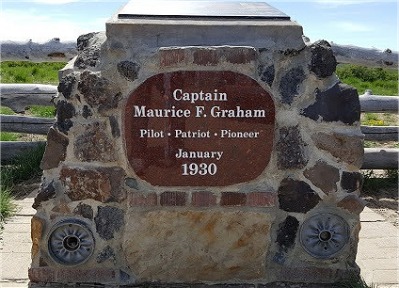
![]()
See Days 1-15 at ERBzine
7156
![]()
JUNE IIa ILLUSTRATIONS COLLAGE
![]()
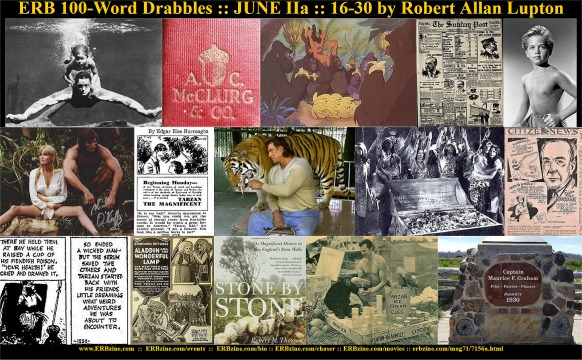
Click for full-size promo collage

